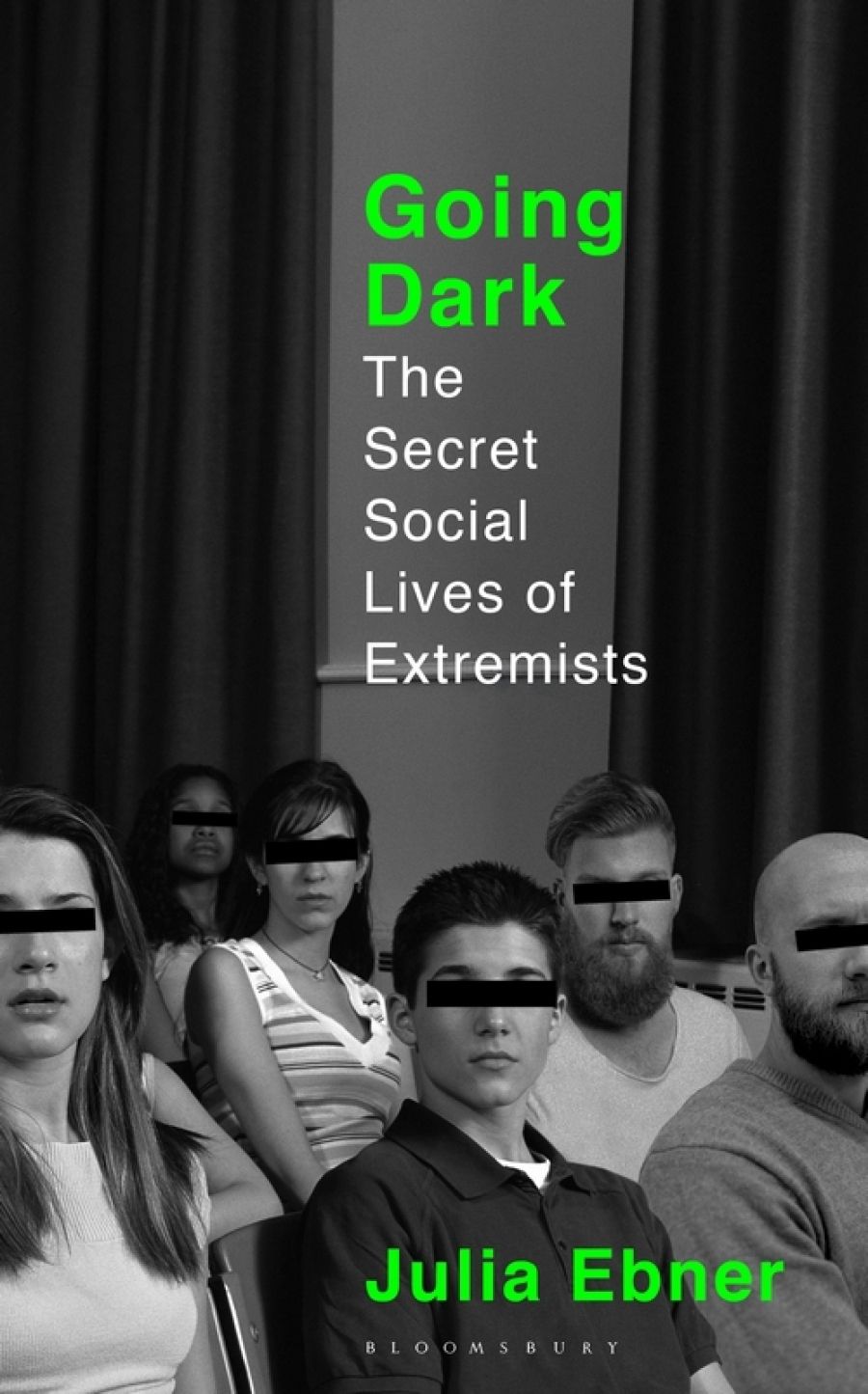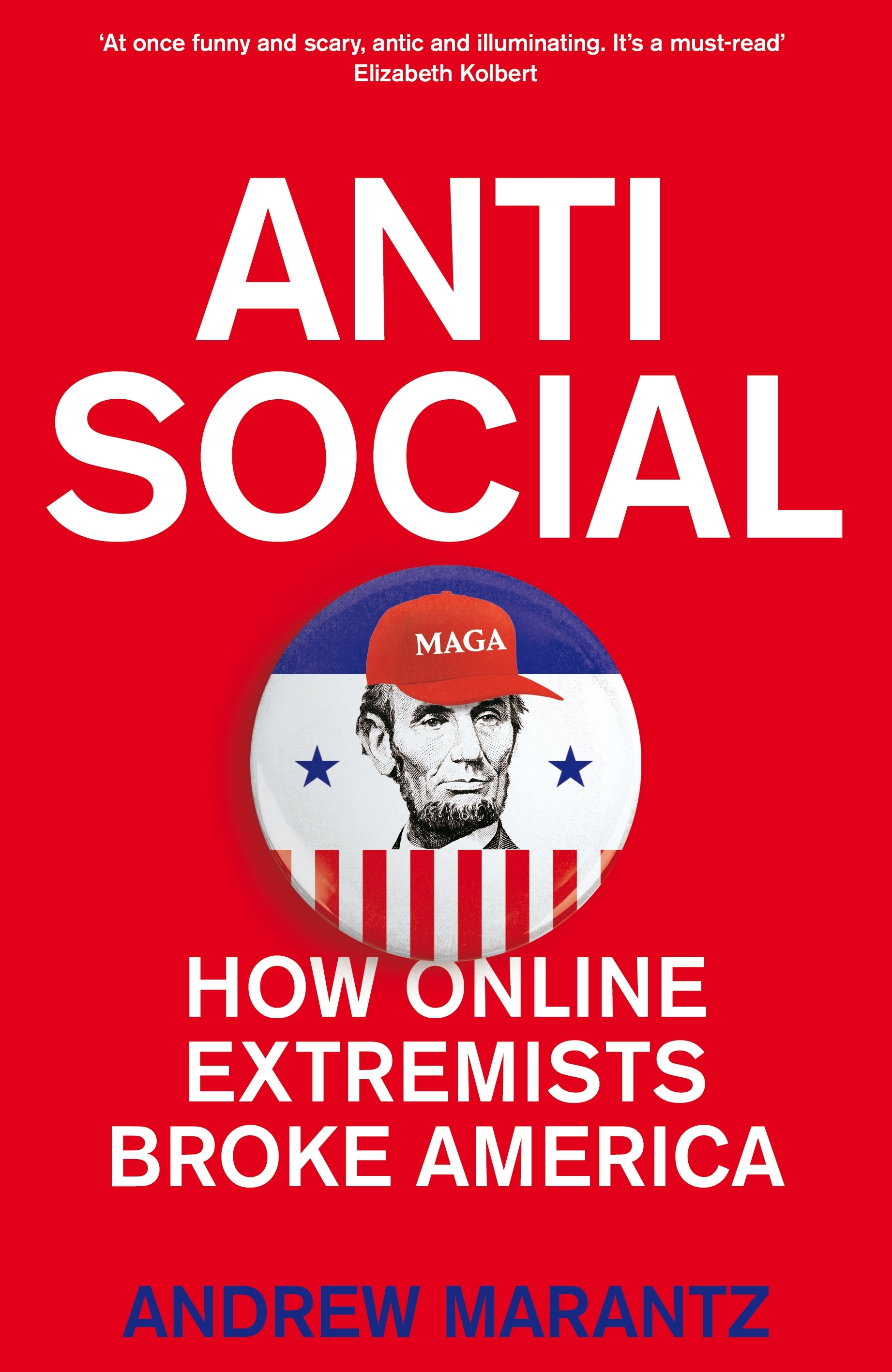
- Free Article: No
- Contents Category: Society
- Review Article: Yes
- Online Only: No
- Custom Highlight Text:
On 15 March 2019, the worst mass shooting in New Zealand’s history took place at the Al-Noor Mosque and the Linwood Islamic Centre in Christchurch. Fifty-one people were killed and forty-nine injured as they gathered for Friday prayers. Sickeningly, the gunman, Brenton Tarrant, live-streamed the event on Facebook. A manifesto written by Tarrant quickly surfaced, full of coded language and references best understood by the alt-right community on online platforms such as Reddit, 4Chan, and 8Chan. In court, as he waited for charges to be read out, Tarrant flashed the ‘okay’ signal, once an innocuous hand gesture, now transformed by the culture of the alt-right into a symbol of white supremacy.
- Book 1 Title: Going Dark
- Book 1 Subtitle: The secret social lives of extremists
- Book 1 Biblio: Bloomsbury, $29.99 pb, 351 pp
- Book 2 Title: Antisocial
- Book 2 Subtitle: How online extremists broke America
- Book 2 Biblio: Picador, $32.99 pb, 380 pp
- Book 2 Cover Small (400 x 600):

- Book 2 Cover (800 x 1200):

- Book 2 Cover Path (no longer required): images/1_Meta/March_2020/Meta/Antisocial.jpg
The Brexit vote, the rise of Donald Trump, and displays of far-right fury across the Anglo-European world have been fuelled by the growth of social media. In Going Dark, Ebner seeks out extremists from across the political and cultural spectrum. It is the far right, however, and the iteration known as the ‘alt-right’, to which she keeps returning. Their language and concerns, particularly around the racial and cultural degeneration of ‘the West’, have found their way into mainstream conservatism. Nowhere has this been more apparent than with Trump, who regularly references and retweets far-right and alt-right thinkers and Twitter accounts. In the aftermath of the violence in Charlottesville, with one counter-protestor killed and far-right protestors chanting ‘Jews will not replace us’, Trump commented that there were ‘very fine people’ on both sides.
Even though Ebner explores some of the darkest aspects of humanity, her writing remains deft and light, with occasional sardonic dryness to leaven the mood. Writing about a dating site and community called ‘WASP Love’ (described as ‘Tinder for Nazis’), she dryly notes: ‘Some WASP Love users confess they have received negative feedback on the mainstream dating apps. I am not surprised; imagine that awkward situation when you sit with a Tinder date who tells you that Jewish policymakers, bankers and journalists have been plotting to wipe out the white race.’
Similar groups also utilise online culture-friendly formats. ‘Reconquista Germanica’ (‘Reconquista’ being the crusades that pushed the Moors out of Spain in the fifteenth century) badges itself as Live Action Role Play, but is devoted to trolling liberal and left-leaning politicians and journalists across Europe; it played a leading role in trying to subvert the German election in 2017. The undermining of democracy through online forums and social media has become widespread, with the Oxford Internet Institute finding ‘evidence of formally organised social media manipulation campaigns in forty-eight countries in 2017 … Most campaigns involved the circulation of misinformation in the run-up to critical junctions such as elections, referendums and crises.’
This distortion of electoral processes is now part of the ‘new normal’. Ebner is no sideline critic, and her work lays out clearly and directly what needs to change. Of the ten steps she lists, it is digital literacy that stands out as being the most important, particularly for ‘digital natives’ such as the millennial generation, who have never known a world without smart phones and social media but who remains vulnerable to misinformation.
This misinformation forms a key part of Marantz’s Antisocial: How online extremists broke America. Tackling the problem differently from Ebner, he openly interviewed both alt-right and far-right extremists, as well as more conventional technology disruptors. While wit and humour, and an almost gonzo-journalist approach, help maintain a fast-paced narrative, underneath Marantz carefully, almost forensically, considers why we have reached this point. Although the subtitle of the book is a sly wink at some of the online hyperbole Marantz analyses, he reaches similar conclusions to Ebner.
The development of the internet and social media is crucial to Marantz’s work. He is careful, however, to intersperse the development narratives of the contemporary online world with those of the players themselves: the extremists who have thrived and profited in online spaces such as Facebook, Reddit, and 4Chan. In the former, Marantz focuses not just on the giants of the field but also on smaller disruptors. His profiling of Emerson Spartz, who made a fortune as the founder of the Harry Potter site MuggleNet, is a case in point. Spartz now runs his own online media company, SpartzInc, which monetises the viral sharing of memes. Spartz dismisses concerns that he and his ilk are responsible for dumbing down how information is shared and consumed. Popularity is the only thing that determines quality, and the important thing is spreading the information, right or wrong, to as many people as possible:
If Mary Mallon had been a housewife, Spartz pointed out, she would have infected only her family. It was because she worked as a cook that she is remembered by history as Typhoid Mary … although I was hardly a marketing expert, it seemed unwise to associate one’s business model with fever, exhaustion, delirium, and death. Still, his point was well taken.
This approach profoundly impacts how and what information is transmitted online. As researchers have found, fake news with clickbait titles and sensationalist content is more likely to be clicked on than real news, something Spartz takes great delight in pointing out to Marantz as he suggests ways The New Yorker could be reformated.
Marantz also talks to the extremists. While some figures on the alt-right were reluctant to engage, Marantz held extended conversations with people like Mike Cernovich, who provides key insights into the movement, both through the example he sets (toxic misogyny, homophobia, and racism), as well as explanations of how establishment politicians and the media have failed to check their advance. Hillary Clinton’s comments in 2016 about how half of Trump’s supporters were a ‘basket of deplorables’ was, according to Cernovich, ‘the stupidest thing she could have done’. On the eve of Trump’s inauguration in 2017, Marantz attended the ‘Deploraball’ for various far- and alt-right figures. How to handle the trolling of the alt-right in this sense is difficult: ‘they set an ingenious trap. By responding to their provocations, you amplify their message. And yet, if no one ever rebuked the trolls, they would run the internet, and perhaps the world.’
It has never been a more important time for this work to be published. ASIO has recently warned of the dangers of the far right in Australia, dangers that are coordinated and exacerbated by online extremism. Shootings at synagogues and mosques in the United States, the United Kingdom, Europe, and the Antipodes are becoming more common. Even prior to Trump’s election in 2016, these ideas were shifting from online forums into mainstream conservative rhetoric. Going Dark and Antisocial are important contributions to a debate that will grow significantly in years to come.


Comments powered by CComment